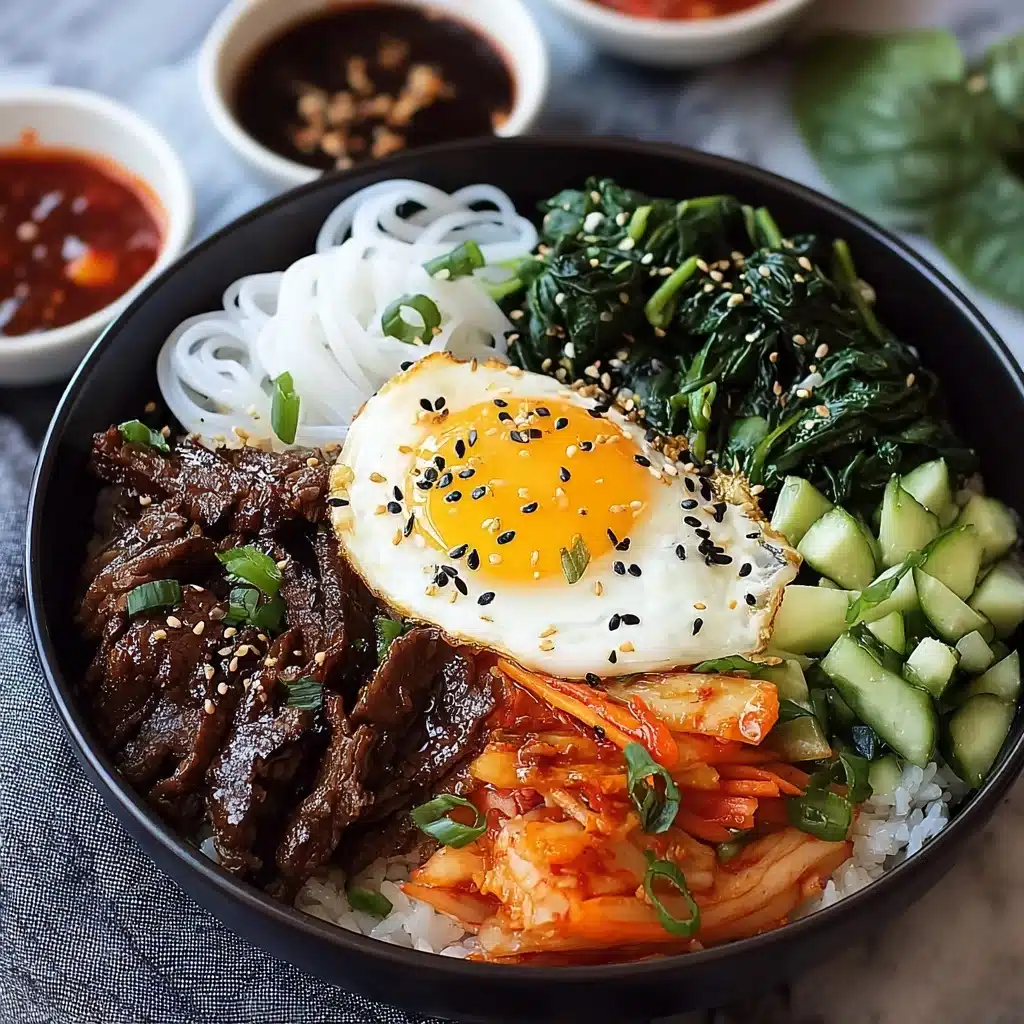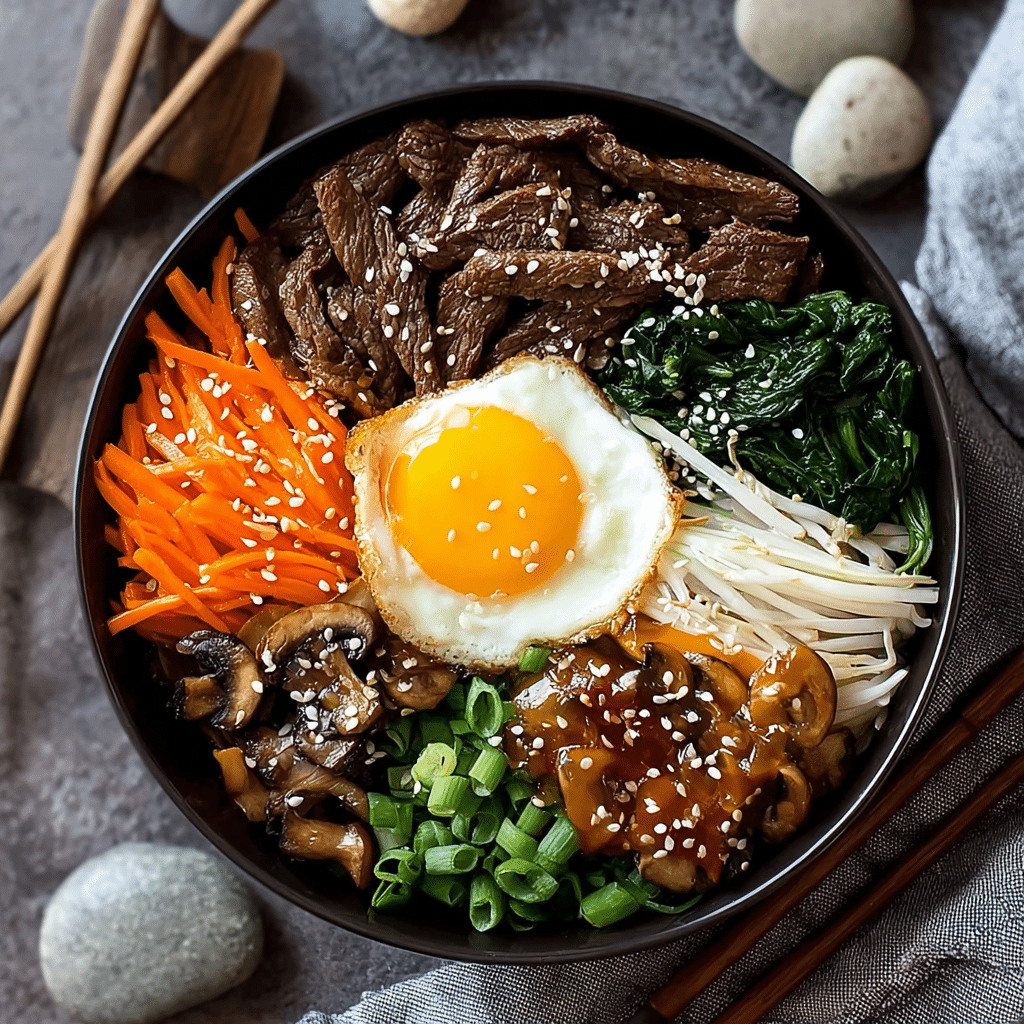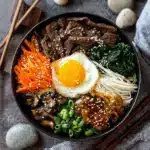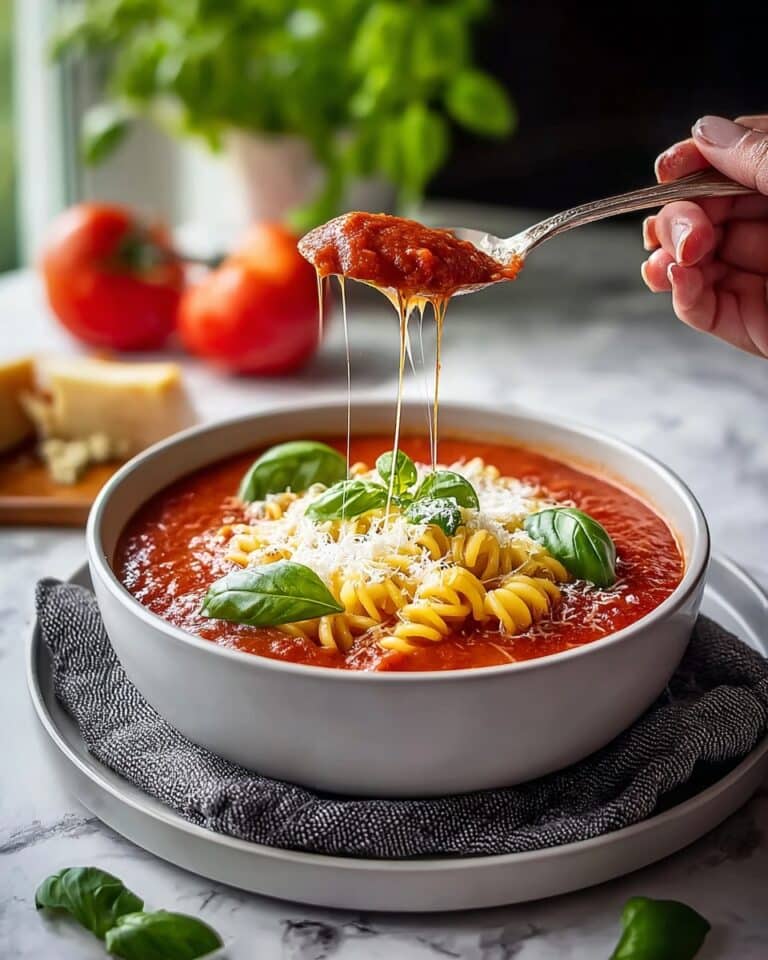Korean Beef Bibimbap Bowl Recipe
If you are craving a vibrant and deeply satisfying meal that brings the best of Korean flavors to your table, the Korean Beef Bibimbap Bowl is an absolute must-try. This colorful dish balances savory, spicy, and fresh notes in every bite, combining tender marinated beef, perfectly cooked rice, crisp sautéed vegetables, and a luscious fried egg on top. Whether you’re new to Korean cuisine or a longtime fan, this bowl is the ultimate comfort meal that’s both exciting and approachable, promising a feast of textures and tastes that will quickly become a favorite in your kitchen.

Ingredients You’ll Need
Gathering a handful of straightforward, fresh ingredients is all it takes to craft a delicious Korean Beef Bibimbap Bowl. Each component plays a crucial role, from the hearty beef and fluffy rice to the vibrant vegetables that add a wonderful crunch and color, creating a harmonious bowl that’s as beautiful as it is tasty.
- Lean ground beef: The star protein, providing rich, savory flavor and satisfying texture.
- Short-grain white rice: The perfect base with sticky, fluffy grains that hold everything together.
- Carrots (julienned): Add a sweet, crisp bite and bright orange hue for visual appeal.
- Spinach (fresh): Provides a fresh, slightly earthy green backdrop to the dish.
- Zucchini (sliced): Brings mild sweetness and tenderness when lightly sautéed.
- Bean sprouts: Add light crunch and a refreshing contrast in texture.
- Gochujang sauce: The essential spicy Korean chili paste delivering depth and a bit of heat.
- Sesame oil: A nutty aroma that elevates all other flavors in the bowl.
- Low-sodium soy sauce: Balances and deepens the savory elements without overpowering.
- Eggs: Fried sunny-side up for a luscious, rich topping that adds creaminess.
How to Make Korean Beef Bibimbap Bowl
Step 1: Cook the Rice
Start by preparing your short-grain white rice according to the package instructions, aiming for tender, fluffy grains with a slightly sticky texture that’s perfect for holding the ingredients together in every bowl.
Step 2: Brown the Ground Beef
In a hot skillet over medium-high heat, cook the lean ground beef until browned and cooked through, about 5 to 7 minutes. Make sure to drain any excess fat afterward to keep the dish balanced and not greasy.
Step 3: Add Flavor to the Beef
Stir in the gochujang sauce, soy sauce, and sesame oil into the browned beef. Lower the heat and let it simmer gently for 5 minutes so the flavors meld beautifully with the meat.
Step 4: Sauté the Vegetables
Using a little sesame oil in a separate pan, sauté the carrots, spinach, zucchini, and bean sprouts over medium heat until they are tender but still retain a pleasant crunch, which should take about 7 minutes. This step adds a vital freshness and texture contrast.
Step 5: Fry the Eggs
Fry your eggs sunny-side up until the whites are fully set but the yolk remains runny. This creamy yolk adds a touch of indulgence that brings the whole Korean Beef Bibimbap Bowl together perfectly.
Step 6: Assemble the Bowl
Layer the cooked rice at the base of your bowl, then top it with the rich beef mixture, followed by the vibrant sautéed vegetables. Crown everything with a beautiful fried egg and add an extra drizzle of gochujang sauce if you like a bit more spice and zing.
How to Serve Korean Beef Bibimbap Bowl

Garnishes
To elevate your Korean Beef Bibimbap Bowl, consider sprinkling roasted sesame seeds or chopped scallions on top. These simple garnishes add subtle crunch and a fresh aroma that highlight the dish’s Korean roots.
Side Dishes
Classic Korean sides like kimchi or pickled radishes make fantastic accompaniments, bringing acidity and tang that cut through the richness of the beef and egg, refreshing your palate with every bite.
Creative Ways to Present
For a fun and interactive experience, serve the components separately and let everyone build their own Korean Beef Bibimbap Bowls. Alternatively, arrange vegetables around the rice and beef in neat sections for a stunning, colorful presentation that is sure to wow your guests.
Make Ahead and Storage
Storing Leftovers
Store any leftover Korean Beef Bibimbap Bowl components in airtight containers in the refrigerator. The beef and vegetables keep well for up to 3 days, but it’s best to keep the egg separate to maintain its texture.
Freezing
You can freeze the cooked beef mixture alone for up to 2 months, but the vegetables and egg do not freeze well, as they tend to become watery or rubbery upon thawing.
Reheating
Reheat the beef and vegetables gently in a skillet or microwave until warmed through. For best results, reheat the rice separately and fry a fresh egg to top off the bowl just before serving.
FAQs
Can I use ground chicken or turkey instead of beef?
Absolutely! Ground chicken or turkey can be substituted for a lighter protein, though the flavor will be milder. Adjust seasoning to enhance the depth when using these alternatives.
Is the gochujang sauce very spicy?
Gochujang has a balanced heat with a slightly sweet and fermented flavor. You can adjust the amount you use to suit your spice tolerance, starting with less and adding more as you go.
What rice is best for bibimbap?
Short-grain white rice is ideal because it’s sticky enough to hold the ingredients together without becoming mushy, enhancing the texture of the Korean Beef Bibimbap Bowl.
Can I prepare this dish vegetarian?
Yes! Replace the beef with tofu or tempeh, and use vegetarian gochujang if available. Sauté the vegetables as usual and top with a fried egg or a vegan substitute for a plant-based version.
How spicy will the finished dish be?
The spice level depends largely on how much gochujang you add. It offers gentle warmth rather than overwhelming heat, but feel free to tailor it to your liking by adjusting the sauce quantity.
Final Thoughts
Making a Korean Beef Bibimbap Bowl at home is such a joyful experience, bringing together bold flavors, fresh textures, and beautiful colors in one delicious bowl. It’s truly a versatile crowd-pleaser that invites creativity and personalization. I can’t recommend enough giving this recipe a go — it’s perfect whenever you want a comforting yet exciting meal that feels special every single time you eat it.
PrintKorean Beef Bibimbap Bowl Recipe
A vibrant and flavorful Korean Beef Bibimbap Bowl featuring tender ground beef seasoned with gochujang, sautéed fresh vegetables, and a perfectly fried egg on a bed of warm short-grain rice. This wholesome, easy-to-make dish balances savory, spicy, and umami flavors for a satisfying meal.
- Prep Time: 15 minutes
- Cook Time: 20 minutes
- Total Time: 35 minutes
- Yield: 4 servings 1x
- Category: Main Course
- Method: Sautéing, frying, and simmering
- Cuisine: Korean
- Diet: Halal
Ingredients
Meat:
- 1 lb lean ground beef
Rice:
- 2 cups short-grain white rice (cooked)
Vegetables:
- 1 cup carrots (julienned)
- 1 cup spinach (fresh)
- 1 cup zucchini (sliced)
- 1 cup bean sprouts
Sauces & Oils:
- 3 tbsp gochujang sauce (adjust for spice level)
- 1 tbsp sesame oil
- 2 tbsp low-sodium soy sauce
Other:
- 4 eggs
Instructions
- Cook the rice: Rinse and cook the short-grain white rice according to the package instructions until fluffy; then set aside and keep warm.
- Brown the beef: Heat a skillet over medium-high heat, add the lean ground beef, and cook for 5-7 minutes, breaking it apart with a spatula, until browned and cooked through. Drain any excess fat.
- Season the beef: Stir in gochujang sauce, low-sodium soy sauce, and sesame oil into the beef mixture. Reduce heat to low and simmer for 5 minutes to meld the flavors.
- Sauté the vegetables: In a separate pan, heat a little sesame oil over medium heat. Add julienned carrots, sliced zucchini, fresh spinach, and bean sprouts. Cook for about 7 minutes until vegetables are tender but retain a slight crisp.
- Fry the eggs: In a clean pan, fry the eggs sunny-side up over medium heat until the whites are set but yolks remain runny, about 3 minutes.
- Assemble the bibimbap bowls: Divide the cooked rice into four bowls. Top each with the seasoned ground beef, sautéed vegetables arranged separately, and a fried egg on top. Drizzle additional gochujang sauce on the eggs or around the bowl as desired for extra spice.
Notes
- Adjust gochujang quantity based on your spice preference.
- You can substitute short-grain white rice with brown rice for a healthier option.
- Sauté each vegetable separately if you want distinct textures and flavors.
- Add sesame seeds and sliced green onions as garnish for extra flavor.
- To make it vegetarian, replace ground beef with firm tofu or mushrooms and omit eggs.
Nutrition
- Serving Size: 1 bowl (approximately)
- Calories: 520 kcal
- Sugar: 5 g
- Sodium: 520 mg
- Fat: 20 g
- Saturated Fat: 6 g
- Unsaturated Fat: 12 g
- Trans Fat: 0 g
- Carbohydrates: 55 g
- Fiber: 4 g
- Protein: 30 g
- Cholesterol: 210 mg
Keywords: Korean beef bibimbap, bibimbap bowl, Korean rice bowl, spicy ground beef, gochujang bibimbap








